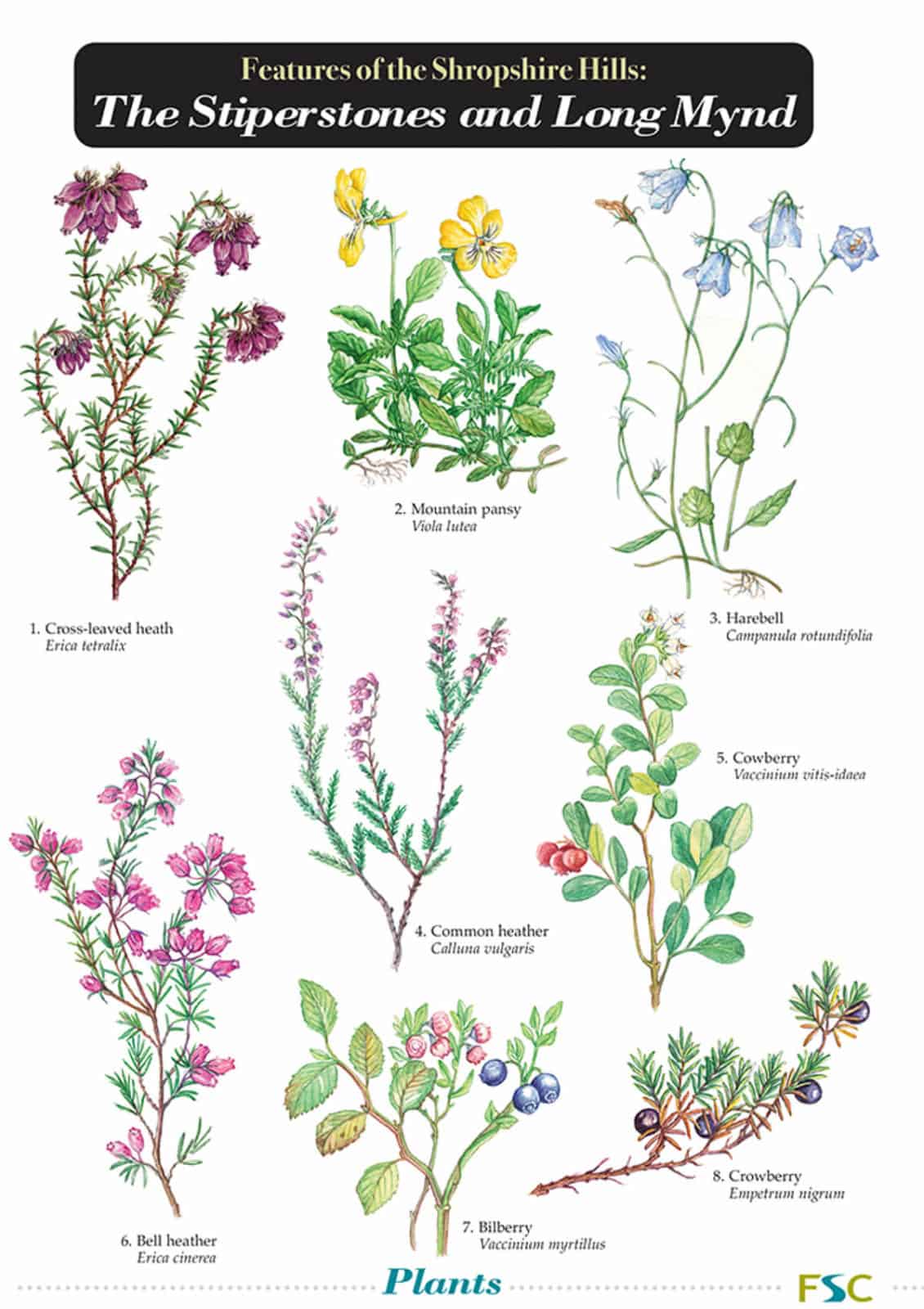Shropshire Hills
The Shropshire Hills is an Area of Outstanding Natural Beauty, stretching from the Wrekin to the Clun Forest, and from Stapeley Common to the Clee Hills.
The dramatic and wild landscape of the Shropshire Hills is a haven for wildlife. This guide focuses particularly on The Stiperstones and The Long Mynd. Beautiful colour paintings show the special birds, insects and plants of the area. Both hills are especially important for their upland birds. These include red grouse, hobby, curlew, snipe, peregrine falcon and even ring ouzel.
The Long Mynd is a large flat-topped plateau, with fast-flowing streams in steep sided valleys. Five miles from north to south, it rises majestically above the town of Church Stretton. In contrast the nearby Stiperstones is steep and rocky throughout. The dramatic skyline of its crest is broken by a series of tors. Heather clothes both hills, flowering spectacularly in late summer.
The Shropshire Hills is popular with visitors, as it contains some of the largest areas of open access land in the English midlands. Road and rail connections make it easy to reach for a day visit from Birmingham, Manchester or Liverpool.
But it is also a living, working area. Generations have made a living from the land, especially through livestock farming but also in mining. So the AONB Partnership works with organisations, landowners and the local community to manage the area in a sustainable way. Overall more than 3000 hectares of the Shropshire Hills are Sites of Special Scientific Interest. These hills are also rich in literary history, inspiring writers such as Malcolm Saville, D.H. Lawrence, A.E. Housman and Mary Webb.
Shropshire Hills AONB, the National Trust and Natural England helped with the development of this guide.







